
ADC potentiometers
You can simulate analog inputs using two provided analog potentiometers which can be connected to each of the 7 supported microcontroller analog input pins.
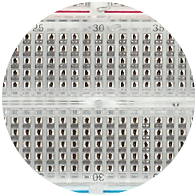
Breadboard area
Transparent large breadboard with 830 points is provided so you can assemble your custom electronics and connect it with the rest of the board.
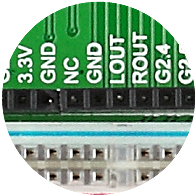
Additional socket
Additional female sockets are provided so you can easily connect any mikroMedia pin with the breadboard area.

DS1820 Temp Sensor
Board supports Dallas DS1820 One-Wire digital temperature sensor. You can measure temperatures from -55C to +125C (-67F to +257F), with 0.5C accuracy.
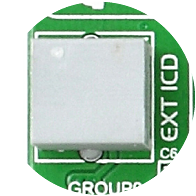
ICD2/ICD3 connector
If you need to use other external programmer with your mikromedia, an ICD2/ICD3 compatible connector is provided, so you can override the on-board mikroProg.
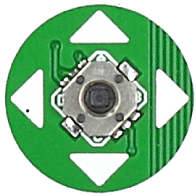
Navigation switch
Navigation switch can be used for handling the on-screen menus or as a generic input device.
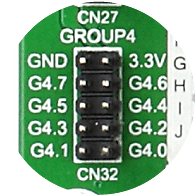
Left PORT Headers
Additional PORT headers are provided on the left side of the board, so you can access the desired microcontroller pins on the other side of the board too.

LM35 Temp Sensor
The LM35 is a low-cost precision integrated-circuit analog temperature sensor. It can measure temeperatures from -55C to +150C with 0.25C accuracy at room temperatures.
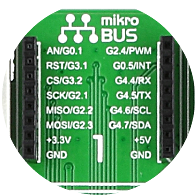
mikroBUS socket 1
mikromedia workStation v7 provides four mikroBUS sockets for mikroElektronika Click Boards. mikroBUS provides simple and effective Plug-and-Play solution.
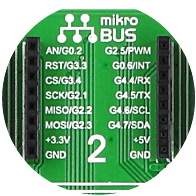
mikroBUS socket 2
mikromedia workStation v7 provides four mikroBUS sockets for mikroElektronika Click Boards. mikroBUS provides simple and effective Plug-and-Play solution.
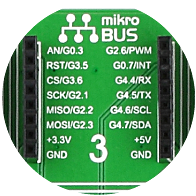
mikroBUS socket 3
mikromedia workStation v7 provides four mikroBUS sockets for mikroElektronika Click Boards. mikroBUS provides simple and effective Plug-and-Play solution.
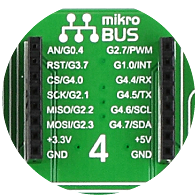
mikroBUS socket 4
mikromedia workStation v7 provides four mikroBUS sockets for mikroElektronika Click Boards. mikroBUS provides simple and effective Plug-and-Play solution.
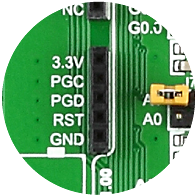
Programmer sockets
Programmer pads on mikromedia boards are connected to the workStation via female sockets.
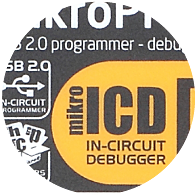
mikroProg™
On-board mikroProg™ In-Circuit Debugger and programmer supports every mikromedia with Microchip® microcontroller.
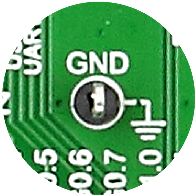
Oscilloscope GNDs
Three separate GND pins are available on the board for easier connection of GND reference for oscilloscope probes.
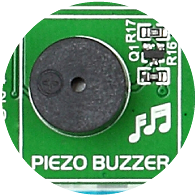
Piezo Buzzer
With piezo buzzer you can debug your applications, or have audio signalization feature. It can be connected to one of two available digital output pins.
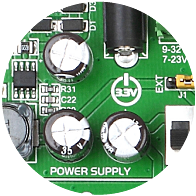
3.3V power Supply
Board is equipped with power supply unit capable of supporting 3.3V microcontrollers and peripherals. Board can be powered over USB cable, or external adapter connectors.
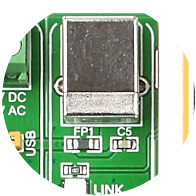
Programmer USB connector
Programmer USB connector is connected to on-board mikroProg, but can also be used to power the board, when the J1 jumper in the Power Supply section is in the USB position
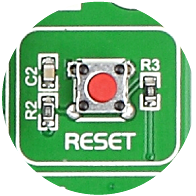
Reset Button
High quality reset button with surrounding reset circuitry ensures stable reset operation.
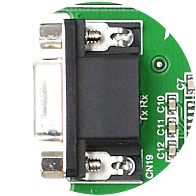
RS-232 Connector
You can implement UART communication through RS-232 connector provided on the board.
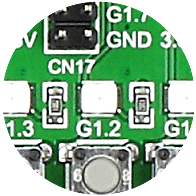
SMD LEDs
Each Input/Output PORT group contains red SMD LEDs with low current consumption of only 1mA. Board contains total of 42 LEDs for PORT pins.
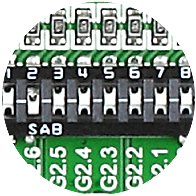
Tri-state DIP switches
Tri-state DIP switches are used to enable 4K7 pull-up or pull-down resistor on ony desired PORT pin.

USB-UART Connector
FTDI chip allows your board to be connected with a PC through USB cable over UART connection.
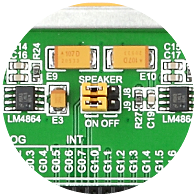
Audio Amplifier
Board contains two audio power amplifiers capable of delivering 675mW of continuous average power into an 8O load.
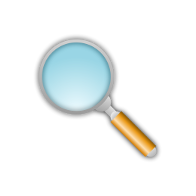
Up-Close
Hover your mouse over different parts of the board in order to view the details up-close.

